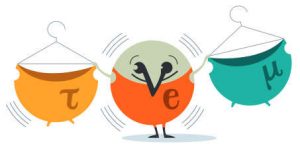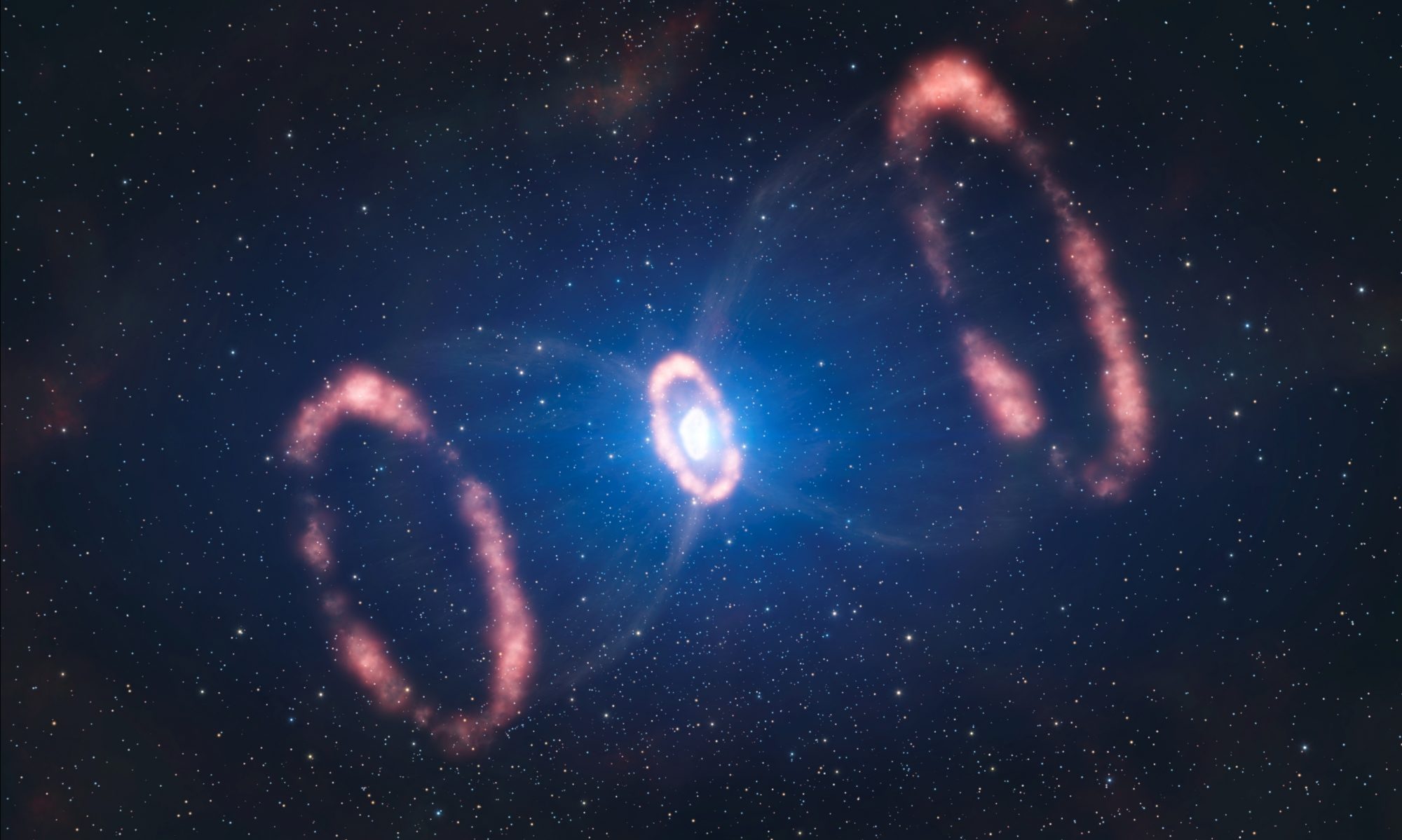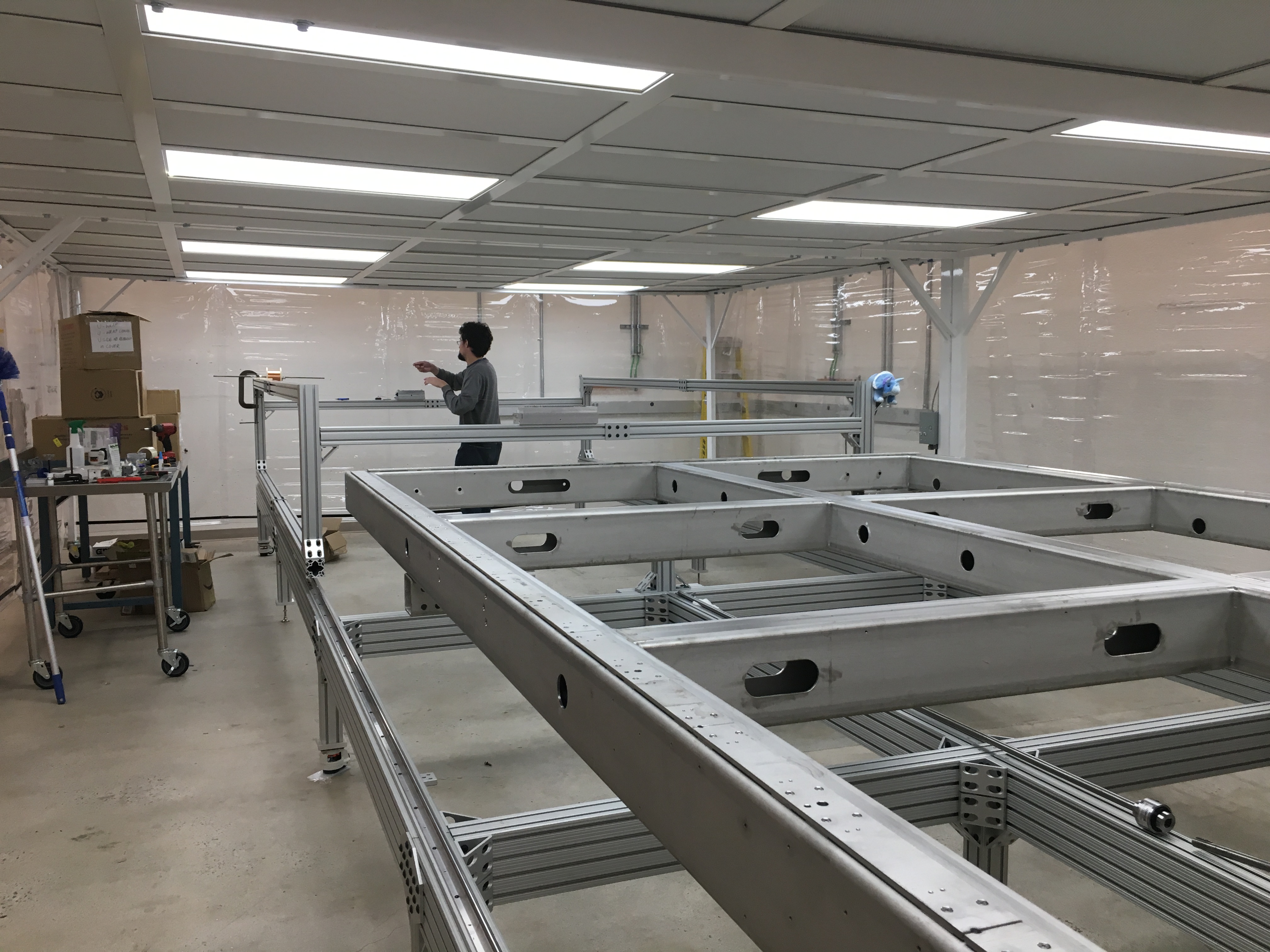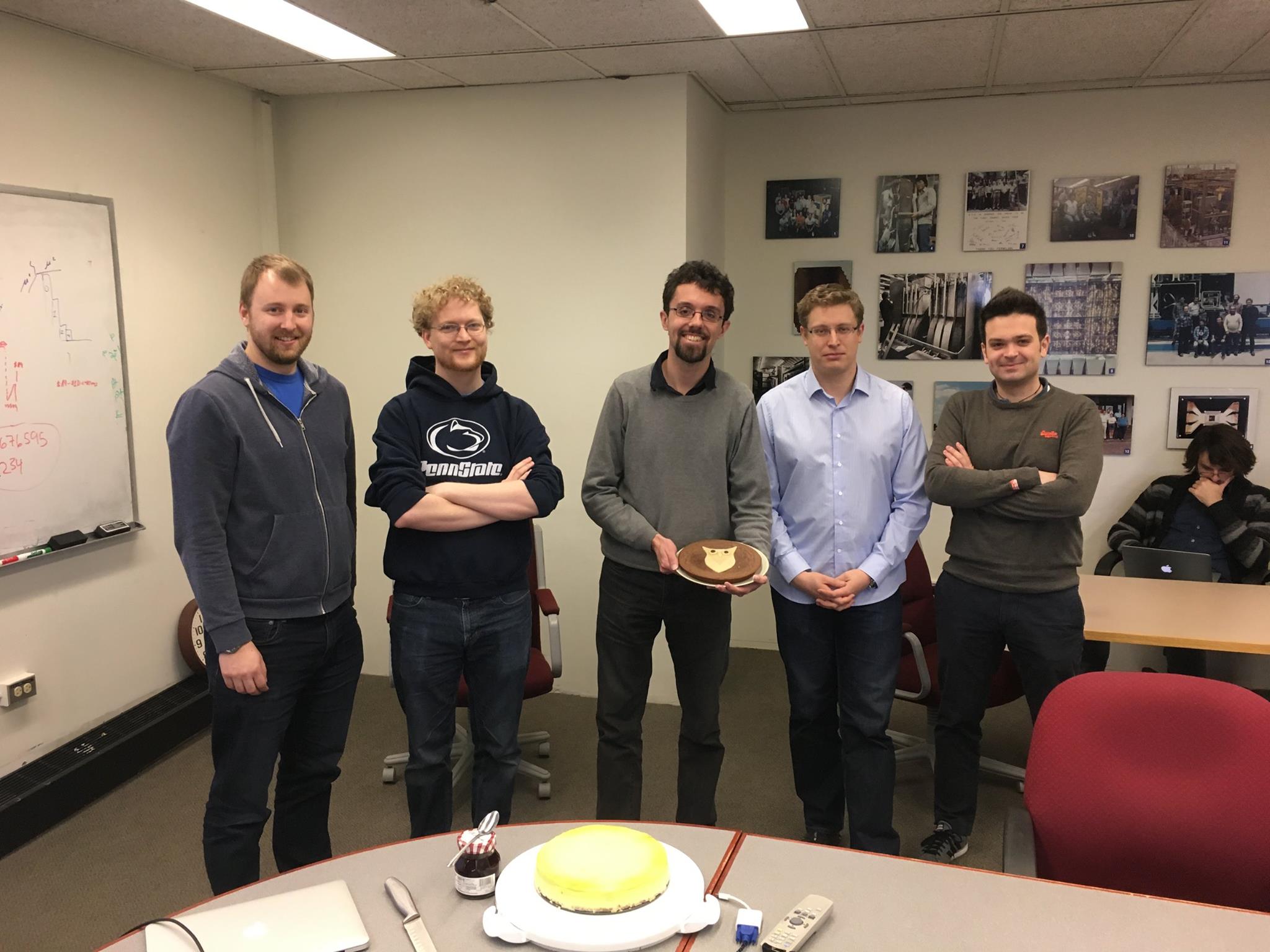Congratulations to Jessica Esquivel, who defended her Ph.D. dissertation last week. Jessica gave an excellent overview of her thesis topic, “Muon/pion separation using Convolutional Neural Networks(CNNs) for the MicroBooNE charged current inclusive cross section measurement.”, and it was great to have her back in Syracuse for a few days.
Getting ready for SBND construction
Our group is getting ready to start wiring 2 Anode Plane Assemblies (APAs) for the SBND experiment. We are performing this construction work in the newly renovated Wright Laboratory at Yale University, where we collaborate with the group led by Bonnie Fleming. This February, after many trips to Yale over the past year by Mitch/Pip/Avinay, we have completed the construction of the wiring apparatus, and look forward to starting production soon!
Run-Co Pip
The “Bird Plot”
Jessica Esquivel gave a very nice update last week at the MicroBooNE collaboration meeting about her work to use “deep learning” tools to separate muons and pions in the CC-Inclusive cross-section analysis. She included this animation, which shows a “deep learning” algorithm learning how to distinguish between five different particle types. This work was done using the SUrge GPU cluster at Syracuse University.

Syracuse joins NOvA
 Syracuse University has now officially joined the NOvA experiment. Prof. Whittington has been a member of NOvA since 2013 when he joined through Indiana University as a postdoctoral researcher. This weekend, Whittington successfully petitioned the collaboration to add Syracuse University to its ranks. He and graduate student Abhilash Yallappa Dombara are the first NOvA collaborators from the neutrino group. They will initially focus on understanding the neutrino and antineutrino composition of NOvA’s antineutrino-mode data, crucial to improving the precision of neutrino oscillation physics measurements.
Syracuse University has now officially joined the NOvA experiment. Prof. Whittington has been a member of NOvA since 2013 when he joined through Indiana University as a postdoctoral researcher. This weekend, Whittington successfully petitioned the collaboration to add Syracuse University to its ranks. He and graduate student Abhilash Yallappa Dombara are the first NOvA collaborators from the neutrino group. They will initially focus on understanding the neutrino and antineutrino composition of NOvA’s antineutrino-mode data, crucial to improving the precision of neutrino oscillation physics measurements.




